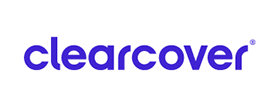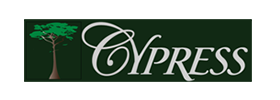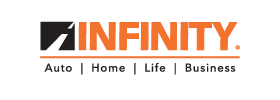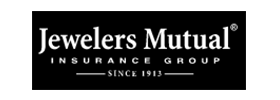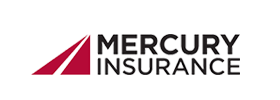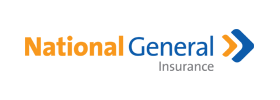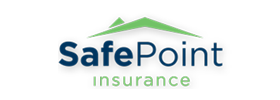Your auto insurance rates could soon be set based on how you, personally, drive–not on your statistical risk.
General Motors Co. (GM) has launched an auto insurance program with its OnStar subsidiary to match data on driving patterns and usage to insurance costs. Tesla and Ford have also announced initiatives, according to Claims Journal.
Right now, insurance companies use criteria such as age, gender, neighborhood and/or credit scores to set insurance prices. Consumer advocates have found this unfair because a good driver could live in a neighborhood that is unsafe and have a lower credit score.
Statistically, a teenage boy is the world’s worst auto insurance risk and insurance rates reflect this. But with usage-based insurance pricing, even a teenage boy might be able to demonstrate he is a good risk.
The mechanism of future insurance pricing will come from telematics–devices that collect real-time information on driving patterns and use. According to JD Power, demand for insurance based on telematics has increased during the pandemic as customers, working from home, thought they could save money on insurance.
What that could mean for good drivers and drivers who don’t drive much is lower rates. Bad drivers would get higher rates. Depending on how the technology is deployed, drivers might get real-time feedback about how they are doing, according to the Insurance Information Institute (III). That could be like having a permanent back-seat driver who is always right. But drivers do respond when they have incentives to drive better, according to iii.org.
A study by Willis Towers Watson showed that, in commercial fleets monitored by telematics, crash rates fell by 80 percent.
But will drivers have privacy concerns, or will they resent having their every driving move monitored? Another survey by Willis Towers Watson suggests not. Resistance to the idea of cars monitoring driving is low, about seven percent.
GM will use data from its on-board concierge service, OnStar. The service helps drivers in emergencies and with navigation, but it also collects data on driving patterns. It takes special note of hard braking and acceleration.
Tesla’s initiative hasn’t yet launched.
Ford Motor Company has teamed up with Allstate Corporation to allow customers to share driving data.
GM says its OnStar program has provided the company with more data from connected vehicles than any other carmaker, as quoted in Claims Journal.
The company’s insurance offer will start in Arizona and use braking, acceleration, and general usage data to help set insurance rates. The program is set to expand nationwide using more data, including tire pressure, lane keeping and automated braking. More use of connected car data could be used if regulatory hurdles can be overcome.
Author: Victor Varma
Consider assets when buying auto insurance
We’re inundated with car insurance ads at every turn, each pledging better rates or more personal service. But aside from knowing what your premium is, do you know what your coverage is and whether you have enough?
Your policy will cover liability, bodily injury liability (BIL), property damage, personal injury protection, uninsured/underinsured motorist coverage, collision and comprehensive.
Many states require a minimum amount of coverage, but you probably want to consider insuring for more. Medical bills can add up to many thousands in a hurry, and you don’t want to be on the hook.
Liability packages often have three numbers, like 100/300/100. This refers to the amount of coverage for bodily injury per person (100k), per accident (300k), and property damage (100k). Individuals with higher net worths may want to boost the first two.
The Wall Street Journal says a good rule of thumb is to get coverage for an amount equal to the total value of your assets (house, car, savings, and investments). Those could be seized to cover repairs or medical expenses otherwise.
Uninsured/underinsured motorist coverage is also vitally important. This pays for damage to your car and passenger injuries caused by an at-fault driver who doesn’t have liability insurance, or a hit-and-run driver. Consumer Reports suggests buying the same limits as on your liability insurance.
Remember also to sign up for the highest deductible you can afford, which will reduce your premiums.
PPP loans and taxed expenses
The IRS issued guidance in November clarifying the tax treatment of PPP loans that have not been forgiven by the end of the year the loan was received:
- Businesses are not taxed on the proceeds of a forgiven PPP loan, so the expenses are not deductible.
This means that the taxpayer sees neither harm nor benefit, since the taxpayer has paid nothing out of pocket.
Here is how this looks on your tax return, according to bench.com:
A C-corporation receives $100,000 in a PPP loan, uses the money entirely on payroll and qualifies for loan forgiveness.
The $100,000 won’t be listed as taxable income on the tax return.
BUT, the tax deduction the business would normally get (about $21,000) won’t be allowable. So, surprise — you have an extra $21,000 tax liability (assuming 21 percent corporate tax). You did receive a net $79,000 from the program, which you have already spent, but which you might not have had otherwise. - Businesses are encouraged to file for forgiveness as soon as possible. If a business believes a PPP loan will be forgiven in the future, expenses related to the loan are not deductible, whether the business has filed for forgiveness or not.
- If a PPP loan is expected to be forgiven but it is not, the business WILL be able to deduct expenses.
According to the CARES Act, a forgiven loan amount won’t be included in taxable income.
New Year’s Resolutions: How to put change ahead of comfort
The urge for self-improvement is strong at the start of a new year. It’s a time for looking back to see what kind of person we have been, and a time for looking forward and visualizing ourselves as the person we want to be.
Here we come to a big question: Is the urge for change more powerful than the drive to revert to what is comfortable to you? At first, change seems manageable, but as time goes on, we may tire like a runner in a long race. Then, as difficulties of our daily lives surround us, returning to our comfort zones could seem more important than making changes.
Keep these points in mind when making resolutions:
- When one resolution involves an important life-style change, don’t make any others. If you want to quit smoking, lose weight, and learn a foreign language, you won’t be able to do all three things at once.
- Study the obstacles to your resolution and determine ways to deal with them. If you want to lose weight, for example, decide to skip the ice cream and have a low-calorie popsicle instead. Tell friends you are not eating rich desserts, so they won’t tempt you.
- Think about professional help. Medical assistance could be valuable in stopping an addictive habit.
- Maintain your focus and monitor your progress. Keep a notebook and record how often the behavior you want to change occurs, who you were with and how you felt. You’ll see a pattern that could be avoided in the future.
- If you break a resolution, don’t give up on the effort. See it as an opportunity for self-understanding. Treat yourself kindly.
New Year’s resolutions are supposed to make you feel good about yourself. If not keeping them makes you think badly about yourself, they aren’t worth the effort. Work at it but lighten up and feel good.
How to repay an Economic Injury Disaster Loan
Wondering how and when to pay back an Economic Injury Disaster Loan (EIDL)? You’re not alone.
Administered by the federal government’s Small Business Administration, EIDLs were part of a relief package Congress passed to help small businesses and the self-employed experiencing temporary losses in revenue due to COVID-19. The EIDL is different from the Paycheck Protection Program, or PPP.
The loan is a 30-year loan at a 3.75 percent interest rate (2.75 percent for nonprofits), with payments deferred for a year (though interest still accrues). Many businesses also received an EIDL grant of up to $10,000, which was forgivable.
Although the SBA hasn’t sent statements or payment stubs yet, you can still start paying the loan off, and there’s no prepayment penalty if you decide to pay in full.
You can find your balance and current payoff status by registering with the SBA’s Capital Access Financial System (CAFS) at https://caweb.sba.gov/cls. You’ll need your SBA loan number, found in your closing documents.
Start by clicking “Not enrolled” under the SBA Account Login heading in the left-hand column on the home page and then choose “Borrower” for user type. Most of the form is self-explanatory, though here’s one hint: When entering your phone number, the country code for the United States is “1.”
After successfully registering, log back in and find your loan by clicking “Borrower Search” on the blue bar at the top of the page. The loan information page will show your loan number and status, the principal balance, and the payoff balance, among other info. It also shows you when your next installment is due and for how much, and how much interest the loan has accrued.
This page also includes a link to pay.gov, where you’ll make payments. This is a much simpler form than at CAFS–you’ll need your SBA loan number again, along with bank account information.
Review homeowner’s insurance for coverage
Your home–one of your biggest lifetime investments–must be protected from the dangers of nature and the world.
What if a volcano erupts, a satellite drops, the wind blows, lightning strikes, or fire burns? For those threats, you need insurance, and you need the right amount.
The biggest catastrophe would be not having enough coverage.
Consider these three types of coverage:
- Standard dwelling coverage.
This is based on the cost to rebuild your house, based on construction and material costs in your area. Your homeowner’s insurance company can give you an estimate and might even update your coverage for you to reflect changing costs of labor and materials. Note that standard coverage does not cover everything. It almost certainly does not cover floods or earthquakes. Or nuclear war. - Extended replacement cost.
Not offered by every company, extended coverage can absorb price increases. If a tornado tears through your town, labor and materials could be scarce and costs could rise. With standard dwelling coverage, you are insured to the limits of your policy but no more. With extended coverage, even if costs rise, your investment will be protected. - Guaranteed replacement cost.
This is the best coverage because it pays to rebuild your house no matter how much costs have gone up. You might need this in a high-value, historical home, for example. You might need it if your home has special features that would be difficult and expensive to replace.
The office after COVID-19 will look and feel different
Our experiences inside grocery and retail stores and restaurants have changed dramatically over the past few months, with many changes likely permanent–plexiglass dividers at checkout and contactless purchases, for example.
But what about the office? What will it look like after the quarantines ease and more workers return to the office after months of remote work?
Touchless technology and air purification systems will likely be the norm, along with separate entrances and exits. A number of design and architectural websites suggest that buttons and handles will be replaced by innovations like foot-activated call buttons for elevators and methods of entering and exiting office restrooms that don’t include handles.
Desks will be spaced farther apart and may feature sneeze guards, and offices may install more motion sensors to turn on lights and faucets. Going even further, companies might rotate staff schedules.
According to Forbes, a hub-and-spoke office model may become more common–a company’s headquarters serves as the “hub,” while the “spokes” are used for smaller teams and are in a variety of geographic locations. The hub is no longer the base where everyone shows up each day.
Other ideas include the elimination of a single office refrigerator in favor of smaller fridges by department, and grab-and-go meals in cafeterias for the foreseeable future instead of self-service hot bars. Self-cleaning surfaces are likely to become the norm as well.
Use it or lose it: Spending down those leftover FSA dollars
In the 1985 film Brewster’s Millions, a minor league baseball pitcher stands to inherit a huge sum of money if he can spend $30M in 30 days but finds that offloading the cash is harder than he thought.
The millions of Americans looking to spend down their tax-free flex spending accounts (FSAs) might have an easier time than Monty Brewster, but there are still limitations. And when workers do not use the cash, they lose it. According to CNBC, workers may lose as much as $400M each year from unused flex dollars. Some companies may permit an extension until March 15 of the following year or allow up to $500 of rollover.
If you have funds leftover in your health care FSA, consider whether you need a flu shot, prescription sunglasses, sunscreen (SPF30 or higher), dental care or other items. You can also buy these items for a dependent, according to Further, an FSA account administrator.
One online vendor, the FSA Store, simplifies shopping for you–all items are FSA-eligible expenses. For vendors that don’t accept FSA debit cards, check with your plan about how to submit expenses for reimbursement.
Flex spending accounts have expanded over the years to allow workers to set aside up to $5,000, tax-free, to pay for dependent care expenses, such as daycare or summer camp. With pandemic-related daycare and summer camp closures in 2020, parents will be hard-pressed to spend those funds before the end of the year, and the money may be lost, according to Arizona Family.
Can I sell my products and services on Facebook Marketplace?
Four years after its quiet beginnings, Facebook Marketplace has become a major player for people buying and selling products. But is it a viable place to earn a serious income, and what about offering services?
Like Craigslist, it’s free to sell on Marketplace–a draw for anyone accustomed to paying fees to sites like eBay and Amazon. However, those two platforms have far larger audiences and are typically the go-to sites for sellers looking to do higher volume. In addition to the difference in audience reach, you can’t list more than 150 items per day on Facebook Marketplace.
Etsy, Mercari, Rakuten, Shopify and Bonanza are also popular platforms with established audiences. And while Marketplace trends toward local sales, users can offer shipping options. Sellers can use Facebook ads to boost their listings.
Marketplace listings are not just about garage sale used products. People sell pre-made outdoor sheds, for example.
What about using Marketplace to offer your services? For now, it’s a no-go.
Facebook’s Commerce Policies says services may not be listed, and its list of 14 examples includes things like photography, electrical, plumbing, cleaning, financial services and lawn care services, among others.
However, you can still create a Facebook page for your business and list your services there, as well as direct potential customers and clients to your website. With a Facebook page, you can communicate with customers right on the page or via Messenger.
A Facebook page adds a credibility factor for services such as light construction or home repair and remodeling. Businesses can also display photos of their work.
How bad has 2020 been for insurance? Look at the numbers
If you live in Oregon, Washington or California, you may no longer be able to get insurance to cover damage from wildfires. Insurance losses from recent wildfires are adding up to be some of the largest on record.
Insurers are moving to raise rates and refuse policy renewals in regions with high fire risk, according to Moody’s Investor Service.
As of late July, losses from wildfires in the western U.S. were estimated to be $8 billion, the third highest on record. However, no one knows how high the total will go, according to Moody’s.
That number is just more pain piled on insurance losses as flash floods, tornados and hail caused another $20 billion in insured losses from natural disasters in 2020.
But that isn’t the full total for storm-related costs. The $20 billion number was calculated before hurricanes.
Analysts project that Hurricane Laura caused $9 billion in insured losses; Isaias caused about $4 billion in insured damage and Hanna caused about $250 million.










